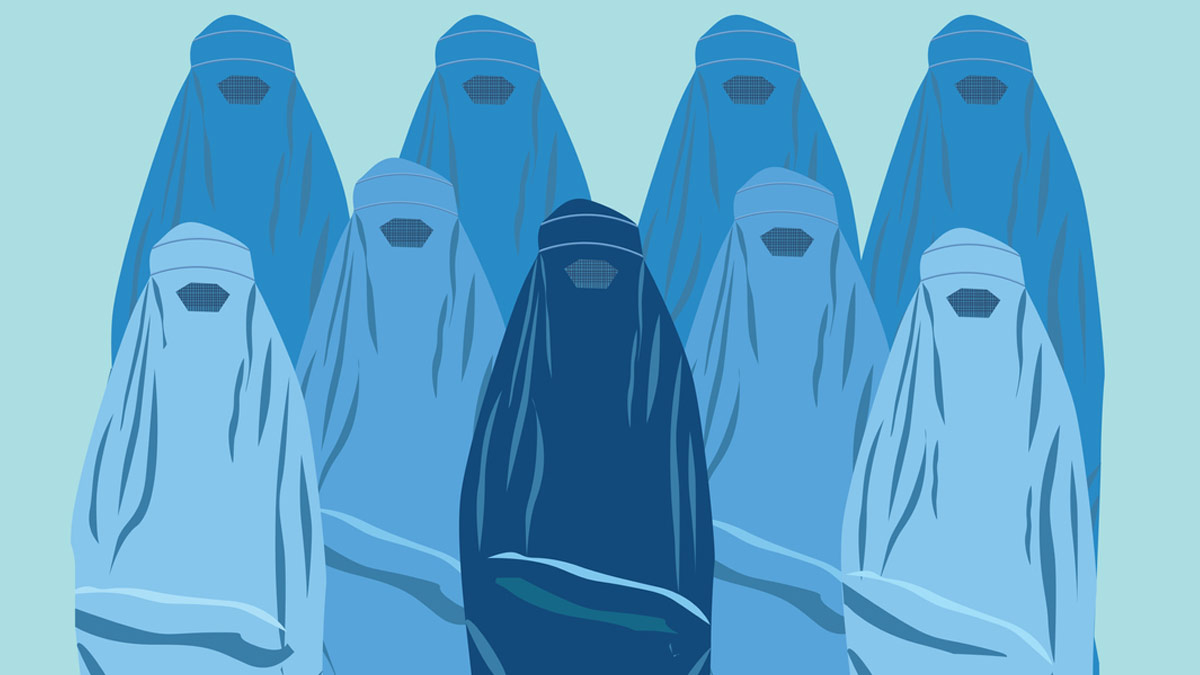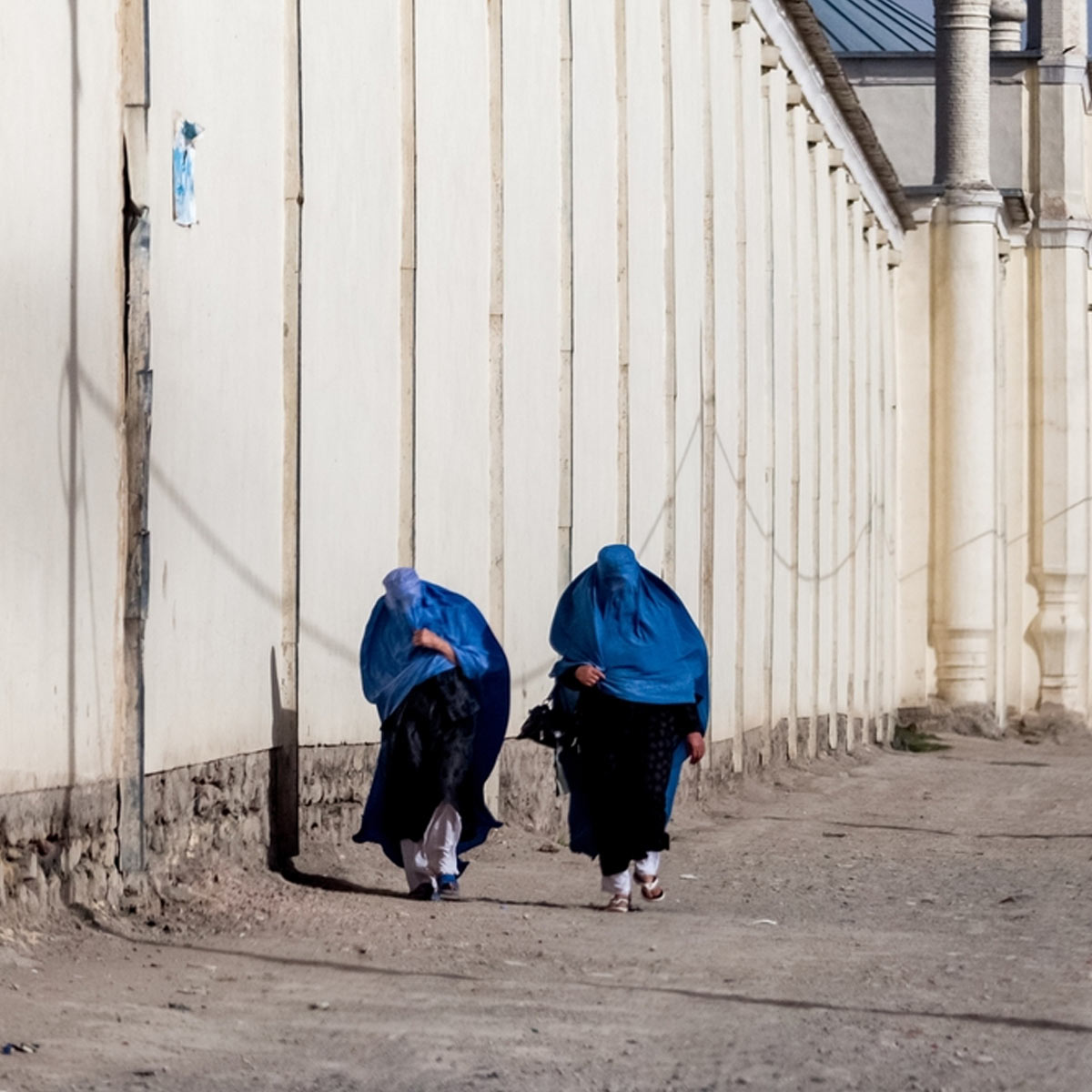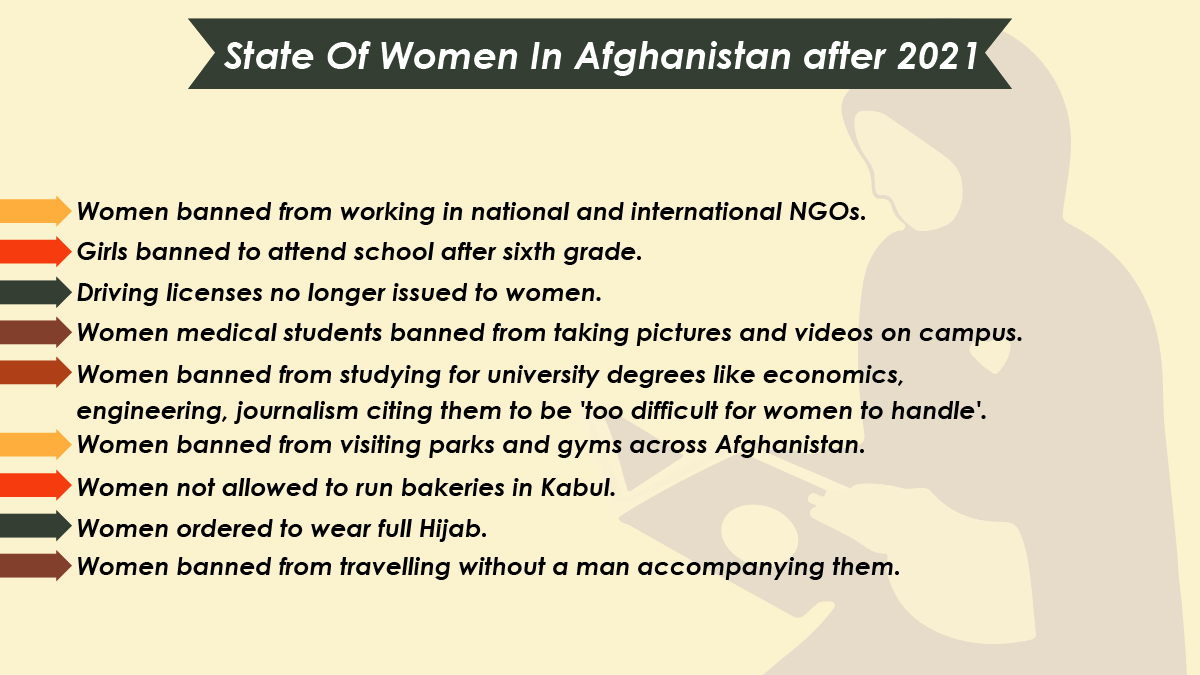
Decoding Taliban Rule: The Unsettling Truth Behind The Strategised Taliban Regime That Erased The Existence Of Afghan Women
The condition of women in Afghanistan seems to be worsening by the day. On comparing the status of women in the nation today with back in the 90s, we only ended up finding more disturbing insights into the lives of girls and women in Afghanistan.Imagine inhaling in a space that restricts you at every turn, strips away your fundamental rights, and erases your very essence. Felt throttled? That's the current state of affairs for women in the Taliban. The mere envisioning of the scenario left us petrified.
The status of women in Afghanistan is disturbing, to say the least and unfortunately, the condition is only worsening by the day. Women in Taliban-ruled Afghanistan inhabit a world that confines them, deprives them of their basic rights, and has robbed them of their human worth.
Taliban Take Over Timeline
Afghanistan Under Taliban Rule In The 90s
According to the US Department Of State report, Taliban first came into limelight in the year 1994. In 1996, the Taliban took over the Afghan capital Kabul. While the world hoped for the Taliban to bring stability to Aghanistan, what happened next left the citizens horrified. The Taliban introduced Sharia law that took away women's right to work, access education and healthcare, dress the way they like, and the ability to move around the city. The enforcement of the law further led to increased crimes against women including abduction, forced marriage, and rape. (report)
While in the early 1990s, women majorly contributed to different professional spheres like teaching, medicine, and government work, post the Taliban take over, they were forced to quit their jobs as teachers, doctors, and nurses. Many women who had lost their husbands due to Afghanistan's civil war had no financial support and they ended up selling off their possessions and begging on streets to feed their families.
1
2
3
4
Elimination Of Women's Access To Education
The Taliban completely restricted education for girls. In 1998, girls over 8 years of age were banned from attending school. Women were also prohibited from studying at Kabul University.
Healthcare Under Taliban Rule
Under the Taliban rule, women had the right to access only basic healthcare and medical care. Women could get themselves examined only if they were fully dressed by a male physician at a hospital. Poor medical care led to a high infant and child mortality rate. It also led to an increase in maternal death during childbirth. Back then, as per a report by United Nations International Children's Emergency Fund (UNICEF), 165 out of every 1000 babies lost their lives before their first birthday.
Clothing Restrictions Under Taliban Rule

Next, the Taliban forced women to wear burqa all the time. The burqa existed before Taliban rule as well, however, women had the choice to wear it based on their religion or personal preference. If women failed to wear a burqa, they were threatened, fined, and beaten on the spot. Women were not allowed to take off the garment no matter what, no exceptions were introduced. Women were expected to have their hands covered even when paying for food in the market. The rule also applied to girls 8 to 9 years of age.
Curbing Women's Movement
Women were further oppressed as the Taliban restricted their movement around the city. They weren't allowed to step out alone. Women could only step out if accompanied by a male relative or they were at the risk of getting beaten up. If they took a taxi without a male relative, the taxi driver lost their license and was beaten up. Women were only allowed to use special buses for women which had windows covered with thick curtains.
USA Invades Afghanistan
After the September 11 attacks on the World Trade Center, the United States announced the beginning of war against Taliban-ruled Afghanistan. The US aimed at dismantling al-Qaeda, the militant organisation led by Salafi jihadists. US President, George W. Bush asked the Taliban government to hand over Osama Bin Laden (the militant responsible for the US 9/11 attacks) and remove of al-Qaeda militants from Afghanistan. The US invasion led to the removal of the Taliban from power and a new government was established in the country.
US And Allies Withdraw

In the year 2021, the US and its allies announced their withdrawal from Afghanistan. After withdrawal, the Taliban once again came into power, leading to the collapse of the Afghan government and security forces. People from the Taliban's leadership once again took over the government, further leading to immediate concerns like the deprivation of human rights to women, imposition of strict Islamic law, and many Afghans fleeing the country to name a few.
Taliban's Strategic Move To Erase Women's Essence

- On 17 August 2021, the Taliban ensured that women will get their rights under the Sharia law, at the press conference, the leadership also promised no discrimination and violence against women. (report)
- 27 August 2021 - Women healthcare workers were granted permission to get back to work.
- 17 September 2021 - Women were banned from playing sports.
- 22 November 2021 - TV dramas with female actors and women news presenters not wearing 'Islamic hijab' were banned.

- 26 December 2021 - A guidance was issued banning taxi drivers from accepting women passengers without a hijab. They were also prohibited from travelling farther than 78 km from their residence.
- 4 January 2022 - Women in Herat City were refused admission at cafes without a Mahram (a male family member or husband)
- 26 February 2022 - Universities were reopened for women but with gender-segregated classrooms.
- 23 March 2022 - The Taliban closes girls' schools indefinitely.
- 26 March 2022 - Women were denied boarding airplanes without a mahram for both domestic and international flights.
Don't Miss: Salon To Gyms: A Look At Bans Imposed On Women In Taliban-Ruled Afghanistan To Crush Their Rights
- 3 May 2022 - Driving schools no longer issue driving licenses to women.
- 7 May 2022 - Women were advised not to step out until there was an emergency and in that case too, they should wear a hijab.
- 21 May 2022 - TV women presenters were ordered to cover their faces while they were on air.
- 6 July 2022 - Schools in Samangan were ordered to close admission for girls above class 6.
- 7 July 2022 - Women were not allowed to visit parks if the park didn't have a segregated area for men and women.
- 26 September 2022 - Women's guests on television were asked to cover their faces.
- 14 October 2022 - The Taliban banned women from studying engineering, economics, agriculture, and journalism among others citing that the degrees were too difficult for women to handle.
Don't Miss: A Look At The Women Of Afghanistan One Year After Taliban Takeover
- 20 December 2022 - All universities suspended access to female students. Girls were banned from attending school beyond grade 6. 4 days later, the de facto Ministry of Economy (existing government, not officially recognised) ordered all international and national NGOs to suspend women staff.
- 1 February 2023 - Female doctors and health care workers are asked to wear full hijab, cover their faces while working.
- 17 February 2023 - Pharmacists in Kabul and Mazar-i-Sharif were ordered to stop getting birth control medicine.
The data by UNWomen.Org only underlines a few decrees by the Taliban targetting the girls and women of Afghanistan after the takeover in 2021. The orders were quite similar to the ones issued back in the 1990s during the Taliban rule. Unfortunately, it all rolls down to the core objective of the Taliban to erase the existence of women from the country.
- Back in the 90s and again in 2021 with the takeover, the Taliban rule stuck to the core plan, eliminating the very existence of women from the country. By taking away the fundamental right of accessing education, the Taliban ensured that no women had any skills to survive on their own.
- Windows of houses were painted to prevent outsiders from seeing women inside their homes. This was another move to isolate women from the world, leading to mental health issues following which women ended their lives.
- A woman's 'pardah' or burqa was symbolic of a prison. Law enforcement suggested that women deserve to live in a constricted space. It underlined the idea that women shouldn't be allowed to be free and trespassing the boundaries set for them will put them at the receiving end of brutality. The restriction imposed wasn't just physical but psychological too, further making question their mere existence in the world.

- After the Taliban takeover, women lost all cabinet positions in the de facto administration, eliminating women's rights in politics. The absence of women in politics further resulted in the lack of policies and laws to address the needs of girls and women in the nation.
- Allowing women to step out only when accompanied by a male relative was another strategic move of the Taliban to make women lose their independence, and freedom to make their own choices.
- The Taliban doesn't offer any legal protection to girls and women in the country, further normalising violence, child marriage, child trafficking, and abduction among other crimes against women.
The Unsettling Case Of Gender Apartheid
Taliban's course of action back in the 90s and now again after 2021 zeroes in on gender apartheid. The term in simple words means the discrimination of one sex using physical and legal practices and unfortunately, this is what women in the Taliban are being subjected to for decades now.
UN Human Rights Council, Richard Bennett, the Special Rapporteur on the situation of human rights in Afghanistan speaking of gender apartheid said, “Women and girls in Afghanistan are experiencing severe discrimination that may amount to gender persecution – a crime against humanity – and be characterised as gender apartheid, as the de facto authorities appear to be governing by systemic discrimination to subject women and girls to total domination.”

Shaharzad Akbar, Executive Director of Afghan NGO Rawadari also gave an insight into the mindset of women and girls in the country. He stated that women and girls feel 'buried alive' since they are only breathing and have no access to doing anything else due to the restrictions imposed on them.
The Taliban's rule has turned Afghanistan into a country where girls and women can no longer dream and there seems no glimmer of hope. It is beyond disappointing to see that the country has failed to get any humanitarian aid and support from neighbouring countries, and other Afghan stakeholders to address the issues faced by girls and women.
UN Women under its Gender Alert in December 2021 report proposed three recommendations - (report)
- Afghan's women's movement should be rebuilt where women are recognised as equal members of society and not victims. This can be done through partnerships with women's CSOs (Central Statistics Organisation) in Afghanistan.
- Introducing an independent human rights monitoring system to understand women's rights in the nation and gather relevant evidence to ensure international human rights law.
- Support and advocate participation of women in humanitarian assistance to address the needs of Afghan girls and women.
Also watch this video
Herzindagi video
1
2
3
4